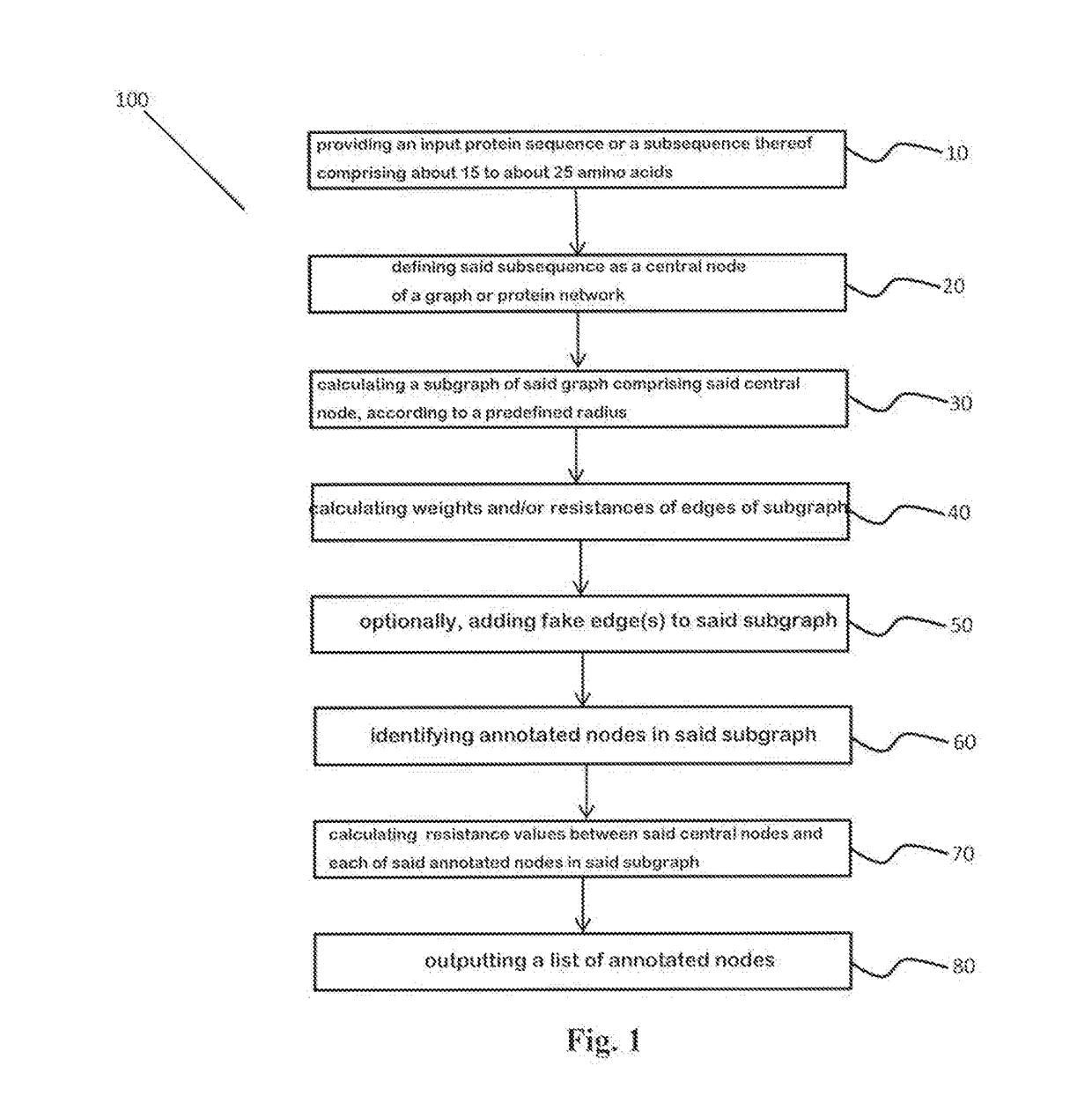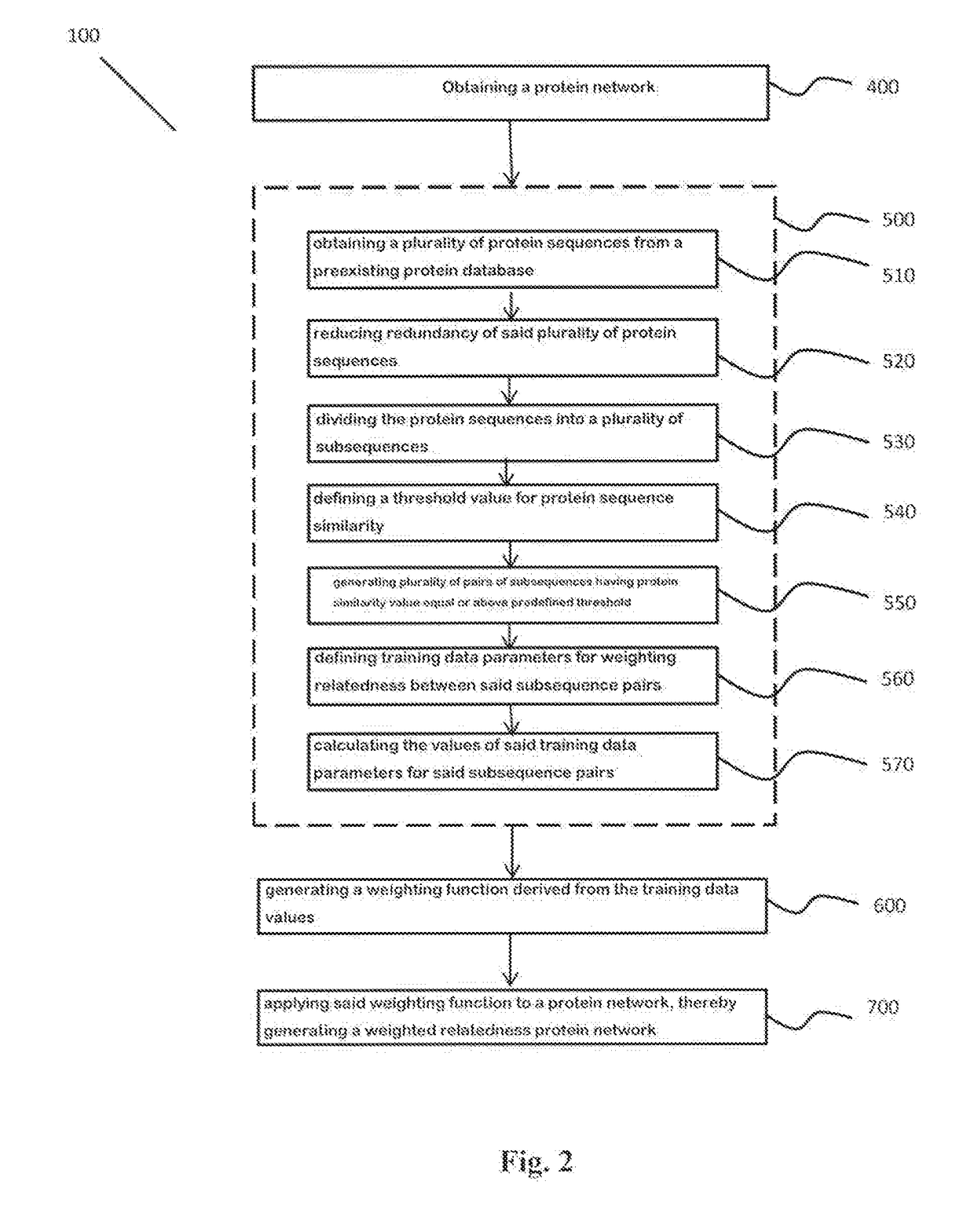Protein design method and system
a protein design and protein technology, applied in the field of protein design via protein networks, can solve problems such as inability to solve problems, limited approach, and troublesome tasks
- Summary
- Abstract
- Description
- Claims
- Application Information
AI Technical Summary
Benefits of technology
Problems solved by technology
Method used
Image
Examples
Embodiment Construction
[0093]The biological functions of proteins are uniquely defined by their amino acid sequence.
[0094]But exactly how this correspondence is established remains a problem of protein sequence analysis to be solved.
[0095]The present invention is directed towards the determination of properties, for example, 3D structure, the biological role and mechanism of functioning, of any protein of interest.
[0096]The present invention is directed towards development and implementation of a novel approach for functional and / or structural protein annotation, via Protein Connectivity Network in sequence space (PCN).
[0097]Among its objectives, the present invention is designed and adapted for common use by pre-calculations and storage of huge amounts of sequence comparison data as well as development of advanced algorithms for analysis of ultra large network graphs. Accordingly, the present disclosure solves these computational problems by application of network clustering algorithms together with phys...
PUM
 Login to View More
Login to View More Abstract
Description
Claims
Application Information
 Login to View More
Login to View More - R&D
- Intellectual Property
- Life Sciences
- Materials
- Tech Scout
- Unparalleled Data Quality
- Higher Quality Content
- 60% Fewer Hallucinations
Browse by: Latest US Patents, China's latest patents, Technical Efficacy Thesaurus, Application Domain, Technology Topic, Popular Technical Reports.
© 2025 PatSnap. All rights reserved.Legal|Privacy policy|Modern Slavery Act Transparency Statement|Sitemap|About US| Contact US: help@patsnap.com


